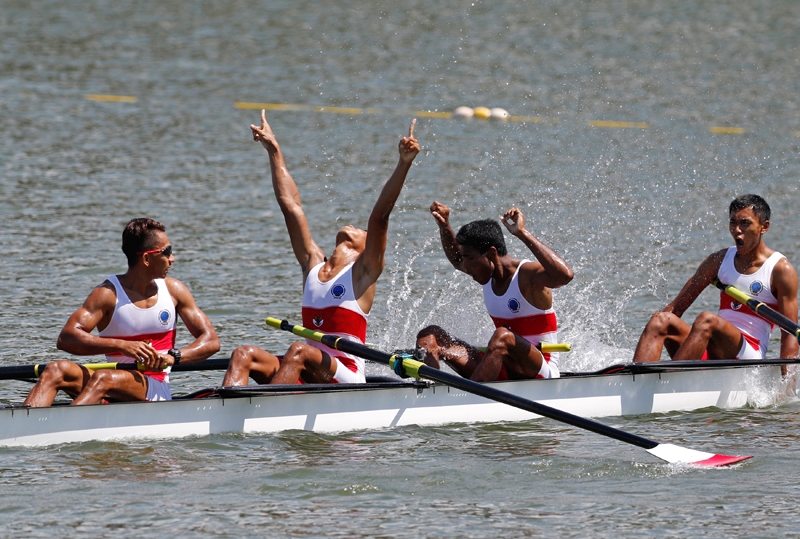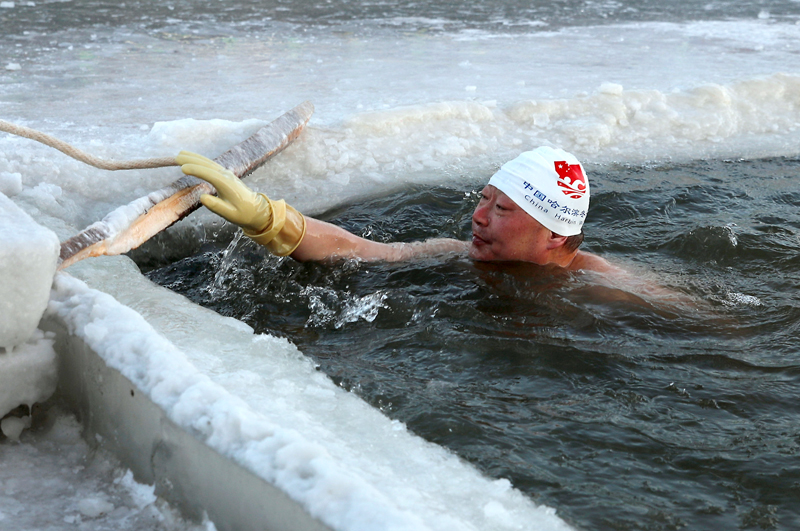You are viewing 1 of your 1 free articles. For unlimited access take a risk-free trial
Training: altitude or sea-level for the greatest gains?

In related work carried out by researchers, competitive rowers who trained at sea level achieved significantly greater gains in fitness, compared to rowers who trained at altitude.
Nine rowers who trained at sea level for three weeks raised their maximal aerobic capacity (V02max) by an average of 4 per cent and upgraded work capacity during a difficult six-minute exercise test by about 3 per cent. By contrast, nine other rowers who trained at an elevation of 1822 metres (about 6000 feet) for three weeks were unable to improve their sea-level V02max or sea-level performance during the six-minute exercise.Since rowing involves the activation of a smaller total muscle mass compared to cycling and running, some exercise scientists have speculated that rowing has a reduced positive impact on the cardiovascular system (it's easier for the heart to keep the arm and shoulder muscles supplied with blood, compared to the arduous task of keeping the ample leg muscles happy, so heart rates are often lower during rowing. With reduced heart rates, there may simply be less stimulus for the heart to improve). However, the Copenhagen research determined that rowing athletes have hearts and blood vessels which are similar to those of endurance cyclists and runners. Overall, rowers have hearts with large internal volumes and thick, muscular walls, and their total blood volumes are also significantly higher than those of sedentary people.
Why was sea-level training better than altitude work for the competitive rowers? Again, the difference was probably due to the intensity-dampening effect of altitude. As oxygen pressures decrease, it becomes more difficult to sustain high-quality intensities for prolonged periods during workouts. As a result, rowers working at altitude are usually training at a lower power output than sea-level trainers. Over a period of several weeks, that difference translates into an advantage for the sea-level athletes.
Of course, altitude training is necessary to produce the best-possible performances at altitude, but its advantages for sea-level competitions remain doubtful. Overall, the best-possible strategy for endurance athletes is to live at altitude, in order to enjoy the haemoglobin-boosting effects of thin air, but to train at sea level or with supplemental oxygen, so that high-quality training is possible. That's difficult to do, unless you happen to have your own helicopter or aeroplane or live in one of the few high-altitude communities in the world which are also just minutes away from a sea-level training site.
'High-Altitude Training Does Not Increase Maximal Oxygen-Uptake or Work Capacity at Sea-Level in Rowers, ' Scandinavian Journal of Medicine & Science in Sports, vol. 3(4), pp. 256-262, November 1993
Newsletter Sign Up
Testimonials
Dr. Alexandra Fandetti-Robin, Back & Body Chiropractic
Elspeth Cowell MSCh DpodM SRCh HCPC reg
William Hunter, Nuffield Health
Newsletter Sign Up
Coaches Testimonials
Dr. Alexandra Fandetti-Robin, Back & Body Chiropractic
Elspeth Cowell MSCh DpodM SRCh HCPC reg
William Hunter, Nuffield Health
Keep up with latest sports science research and apply it to maximize performance
Today you have the chance to join a group of athletes, and sports coaches/trainers who all have something special in common...
They use the latest research to improve performance for themselves and their clients - both athletes and sports teams - with help from global specialists in the fields of sports science, sports medicine and sports psychology.
They do this by reading Sports Performance Bulletin, an easy-to-digest but serious-minded journal dedicated to high performance sports. SPB offers a wealth of information and insight into the latest research, in an easily-accessible and understood format, along with a wealth of practical recommendations.
*includes 3 coaching manuals
Get Inspired
All the latest techniques and approaches
Sports Performance Bulletin helps dedicated endurance athletes improve their performance. Sense-checking the latest sports science research, and sourcing evidence and case studies to support findings, Sports Performance Bulletin turns proven insights into easily digestible practical advice. Supporting athletes, coaches and professionals who wish to ensure their guidance and programmes are kept right up to date and based on credible science.









